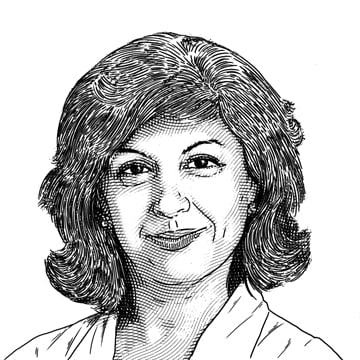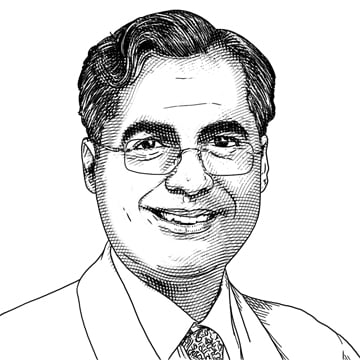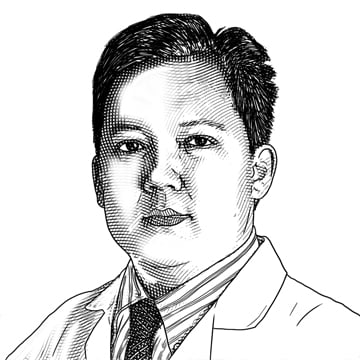KEY TOPIC
Touching More Lives
How will organ transplantation evolve to better serve patients?
Edited by John Soeder
Illustrations: Ken Kula

Dr. Miller is the Enterprise Director of Cleveland Clinic Transplantation.
Charles Miller, MD
Throughout the history of transplantation, today and into the future, success can be identified in the innovative and hard-won mitigation of the hurdles involved. Those hurdles include the overwhelming need and number of patients with end-stage organ failure; the relative scarcity of usable human organs to transplant them with; the technical surgical complexities; and the aftercare challenges that importantly include overcoming the immunologic differences necessary to allow for long-term, complication-free engraftment and patient survival. Our evolution within the Cleveland Clinic Transplant Enterprise has been based on maximizing quality outcomes for all the organs (heart, lung, liver, kidney, pancreas, intestine, uterus and face) and dispersing and expanding our best practices and caregivers throughout our global footprint, including Abu Dhabi, Florida, Cleveland and, in the future, London. In so doing, we seek to touch as many lives as possible with a uniform approach. In order to be able to offer the gift of life to as many people as possible, we are committed to both the innovation in organ perfusion/preservation that will allow us to objectively evaluate and maximize the number of usable human organs available and advocate for broad and equitable distribution, and to the science of immune tolerance that will assure good, complication-free graft function for the natural life of the patient.

Dr. Budev is the Director of Cleveland Clinic’s Lung and Heart-Lung Transplant Program and the holder of the Macon and Joan Brock Endowed Chair.
MARIE BUDEV, DO
The allocation system for organ donation in the U.S. is under rapid change. The framework for the allocation policy is called continuous distribution (CD) and is meant to strengthen the system and ensure that patients have equitable access to lifesaving organs. The aim is to get as many usable transplant organs to patients who need them, fairly, equitably and efficiently. In March 2023, the new organ allocation policy for lung transplantation (the first to implement CD) went into effect. The three-month post-implementation report noted a 16% increase in lung transplants and a decrease in waitlist deaths or removals.

Dr. Estep is the Division Chair of Cardiovascular Medicine at Cleveland Clinic Florida.
JERRY ESTEP, MD
The field of heart transplantation is evolving with expansion of the donor pool by using donors with heightened risk criteria; advances in organ allocation, donor-recipient matching and organ preservation; and improvement in post-transplant care. The current heart allocation system minimizes waitlist mortality for the sickest and promotes broader sharing. Donated hearts are now being procured at greater distances, in part based on adoption of new techniques and technologies which permit safe and continuous normothermic perfusion of the donor organ. Donation after circulatory death and possibly xenotransplantation in the future remain additional exciting possibilities to expand the donor pool.

Dr. Wee is the Director of Cleveland Clinic’s Kidney Transplant Program.
ALVIN WEE, MD
Systems to allocate organs for transplantation continue to evolve to address disparities in waiting time to receive a kidney transplant in the U.S. Organ Procurement and Transplantation Network (OPTN) policies to allocate kidneys have been changing to improve equity and access for all. The last revision in March 2021 highlights the removal of donor service area and OPTN region, replacing it with a radius of 250 nautical miles around the donor hospital. This revision has resulted in a 29% increase in the overall transplant rate and an increase of more than 30% in access across many traditionally vulnerable groups.
